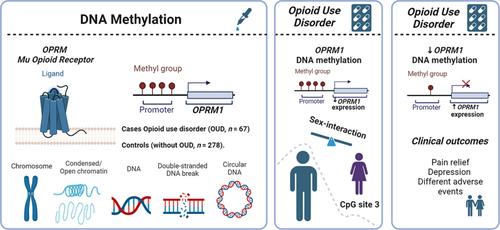当前位置:
X-MOL 学术
›
Strateg. Entrep. J.
›
论文详情
Our official English website, www.x-mol.net, welcomes your
feedback! (Note: you will need to create a separate account there.)
Validation of drug-nondrug choice procedure to model maladaptive behavioural allocation to opioid use in rats
Strategic Entrepreneurship Journal ( IF 5.4 ) Pub Date : 2024-10-08 , DOI: 10.1111/adb.13442 Setareh Azizzadeh, Milad Rahimpour, Kamran Rakhshan, Bahador Makkiabadi, Esmail Riahi
Strategic Entrepreneurship Journal ( IF 5.4 ) Pub Date : 2024-10-08 , DOI: 10.1111/adb.13442 Setareh Azizzadeh, Milad Rahimpour, Kamran Rakhshan, Bahador Makkiabadi, Esmail Riahi

|
Increased allocation of behaviour to substance abuse at the expense of personal and social rewards is a hallmark of addiction that is reflected in several of DSM-5 criteria for diagnosis of substance use disorder. Previous studies focused on refining the self-administration (SA) model to better emulate an addictive state in laboratory animals. Here, we employed concurrent SA of sucrose pellets and morphine as two competing natural and drug rewards, respectively, to validate the feasibility of capturing pathological behavioural allocation in rats. A custom-made three-lever operant chamber was used. With one active and one inactive lever presented, rats were trained to self-administer morphine (0.5 mg/kg/infusion; 2 h/day) under a fixed-ratio 1 (FR-1) schedule until a stable response was achieved. Next, they were trained to self-administer morphine in the presence of a third lever dispensing sucrose pellets (20 mg) under FR-1. Concurrent morphine-sucrose SA sessions (2 h/day) were continued until stable morphine taking behaviour was re-established. In another experiment, rats first established stable sucrose pellet SA (2 h/day, FR-1) and then were trained to take morphine (0.5 mg/kg/infusion; 2 h/day). Subsequently, all rats underwent extinction training, in which morphine was replaced with saline while sucrose pellets were still available upon lever pressing, followed by cue-induced reinstatement of morphine seeking behaviour. Results showed that rats retained morphine SA when sucrose pellets were also available, but they showed binge-like sucrose intake when morphine was removed during the extinction sessions. However, morphine SA did not develop in rats that had previously established sucrose pellet SA. In conclusion, morphine SA developed even in the presence of a potent competing nondrug reward in rats. Adding an effort-based contingent delivery of a natural reward to the standard SA model, this protocol may provide an improved model of drug addiction in laboratory animals.
中文翻译:

验证药物-非药物选择程序,以模拟大鼠对阿片类药物使用的适应不良行为分配
以牺牲个人和社会奖励为代价增加物质滥用的行为分配是成瘾的一个标志,这反映在 DSM-5 物质使用障碍诊断的几项标准中。以前的研究侧重于改进自我管理 (SA) 模型,以更好地模拟实验动物的成瘾状态。在这里,我们采用蔗糖颗粒和吗啡的并发 SA 分别作为两种竞争性天然和药物奖励,以验证捕获大鼠病理行为分配的可行性。使用定制的三杆操作室。在出现一个活性杠杆和一个非活性杠杆的情况下,训练大鼠在固定比率 1 (FR-1) 方案下自行给予吗啡 (0.5 mg/kg/输注;2 小时/天),直到达到稳定的反应。接下来,他们接受了训练,在 FR-1 下,在第三个杠杆分配蔗糖颗粒 (20 mg) 的情况下自行施用吗啡。同时进行吗啡-蔗糖 SA 疗程 (2 小时/天),直到重新建立稳定的吗啡服用行为。在另一项实验中,大鼠首先建立稳定的蔗糖沉淀 SA (2 h/d, FR-1),然后训练服用吗啡 (0.5 mg/kg/输注;2 h/d)。随后,所有大鼠都接受了灭绝训练,其中吗啡被盐水取代,而蔗糖颗粒在杠杆按压后仍然可用,然后提示诱导恢复吗啡寻求行为。结果显示,当蔗糖沉淀也可用时,大鼠保留了吗啡 SA,但在灭绝过程中去除吗啡时,它们表现出类似暴饮暴食的蔗糖摄入量。然而,吗啡 SA 在先前建立蔗糖沉淀 SA 的大鼠中未发生。 总之,吗啡 SA 即使在大鼠存在有效的竞争性非药物奖励的情况下也发生了。在标准 SA 模型中添加了基于努力的自然奖励的或有交付,该协议可能提供一种改进的实验室动物药物成瘾模型。
更新日期:2024-10-08
中文翻译:

验证药物-非药物选择程序,以模拟大鼠对阿片类药物使用的适应不良行为分配
以牺牲个人和社会奖励为代价增加物质滥用的行为分配是成瘾的一个标志,这反映在 DSM-5 物质使用障碍诊断的几项标准中。以前的研究侧重于改进自我管理 (SA) 模型,以更好地模拟实验动物的成瘾状态。在这里,我们采用蔗糖颗粒和吗啡的并发 SA 分别作为两种竞争性天然和药物奖励,以验证捕获大鼠病理行为分配的可行性。使用定制的三杆操作室。在出现一个活性杠杆和一个非活性杠杆的情况下,训练大鼠在固定比率 1 (FR-1) 方案下自行给予吗啡 (0.5 mg/kg/输注;2 小时/天),直到达到稳定的反应。接下来,他们接受了训练,在 FR-1 下,在第三个杠杆分配蔗糖颗粒 (20 mg) 的情况下自行施用吗啡。同时进行吗啡-蔗糖 SA 疗程 (2 小时/天),直到重新建立稳定的吗啡服用行为。在另一项实验中,大鼠首先建立稳定的蔗糖沉淀 SA (2 h/d, FR-1),然后训练服用吗啡 (0.5 mg/kg/输注;2 h/d)。随后,所有大鼠都接受了灭绝训练,其中吗啡被盐水取代,而蔗糖颗粒在杠杆按压后仍然可用,然后提示诱导恢复吗啡寻求行为。结果显示,当蔗糖沉淀也可用时,大鼠保留了吗啡 SA,但在灭绝过程中去除吗啡时,它们表现出类似暴饮暴食的蔗糖摄入量。然而,吗啡 SA 在先前建立蔗糖沉淀 SA 的大鼠中未发生。 总之,吗啡 SA 即使在大鼠存在有效的竞争性非药物奖励的情况下也发生了。在标准 SA 模型中添加了基于努力的自然奖励的或有交付,该协议可能提供一种改进的实验室动物药物成瘾模型。


















































 京公网安备 11010802027423号
京公网安备 11010802027423号